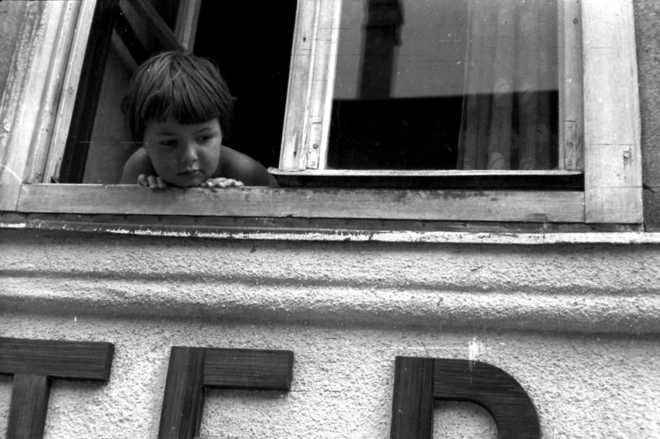
The legendary Satyajit Ray clicked this picture in Stockholm.
Amit Sengupta
In the synthesis of a rare, sensuous winter and a sunny spring, heavy rains and lightning arrived in Kolkata to welcome a great creative event called the ‘Mahakumbh of Photography’. The rains could not dampen the spirits of the locals. The first Kolkata International Photography Festival (KIPF), which stretched on till early March, was inaugurated amidst a packed audience at the Indian Museum in Kolkata by legendary photographer Raghu Rai. The prestigious event, with 250 Indian and international photographers, was showcased in huge exhibitions in ten famous art galleries, across many halls and several huge floors, all over the ‘Mahanagar’ with some of the biggest names in photography mingling with the young, amateur and eclectic ‘artists with the camera’. Film shows, interactions, talks, workshops, journeys with the photographer – they all made it a big package on a rainy spring day in Kolkata.
“Enough is enough,” said great painter Jogen Chowdhury at the inauguration. “No one has been listening to me. However, I assert, yet again, that photography is an art form. The method is mechanical, but the aesthetic process and the final product is pure art.”
“Yes,” said Raghu Rai, the chief guest. “Photography is an art form, in all its expressions of brilliance. I would say that it is a divine gift. Conceptual pictures with predictable and planned beauty, for instance, are neither photography nor art. It is an instinctive gift which you must receive from society and nature with your camera with certain humility. That’s how a great picture is created. It liberates you. The image takes you by surprise.”
Ask Shyamal Dutta. Based in Shillong, Meghalaya, for 15 years, he has travelled and lived in difficult terrains and hilly interiors, walking and trekking for miles through dense forests, mountains and across rivers, for one sublime click, waiting patiently for months for that moment of absolute solitude or sudden revelation, across the most difficult and often hostile and dangerous twilight zones of the Northeast of India. No, this is not tourism photography. This is visual anthropology, where the subject is the centrepiece of a visual narrative equivalent to the most rigorous form of academic research of social reality, folk narratives, human condition, ethnic and cultural differences, tribal identities, their exquisite and meticulous local architecture, and their life and times, often left to the invisible and hidden margins in remote landscapes.
“I would trek for days to reach a village and would be greeted with absolute hostility. The camera had no meaning there. It took me years to make the camera and the visual integral to the friendship of the people in remote places in Nagaland and Mizoram. I was obstinate. I had to document their undocumented visual history,” said Dutta.
Prabir Purokayastha agrees that this is not exactly normal. Why else would he travel and again and again, for 26 long years, to the most distant and most solitary edges of frozen Ladakh, making pictures which seem like abstract paintings, but are actually the magical formations of rivers in sunset, streams in the morning, mountains in dusk, and nights in abject darkness with a streak of moonlight. The photographs become paintings and film, in slow-motion, not static, in movement, captured in his mind and translated with incredible patience and fortitude, when he waited for that certain moment for days and months – in the freezing cold in abject solitude. “You can call it a kind of madness. However, for him, it is both enlightenment and liberation.”
In contrast, a lean Pankaj Mistry, with his flowing white locks, declared a ‘monk’ by curator and art critic Uma Nair, is rooted in the inner spaces of homes, doorways, windows, courtyards, open-to-sky spaces. There are mostly no human beings in his pictures. “I am looking for beauty and humanity in solitary moments. I am looking for stillness. There might be no people there – but their presence, daily life, memories, longings and history – they are all etched in these inner spaces. Quiet and unseen homes and kitchens often tell you more stories that what lies outside. Yes, there is the also presence of Van Gogh out there — like his paintings of still objects,” says Mistry.
Indeed, in the celebration of photography as an art form, there was a resurrection and mingling of the old and the new. From Raghu Rai’s great retrospective of 60 years of legendary pictures, to young Gaurab Guha’s portraits of men and women dressed up as ‘Goddess Kali’ across the fairs and festivals of Bengal, this was old meeting the new. A Mahakumbh of Photography, truly.



























